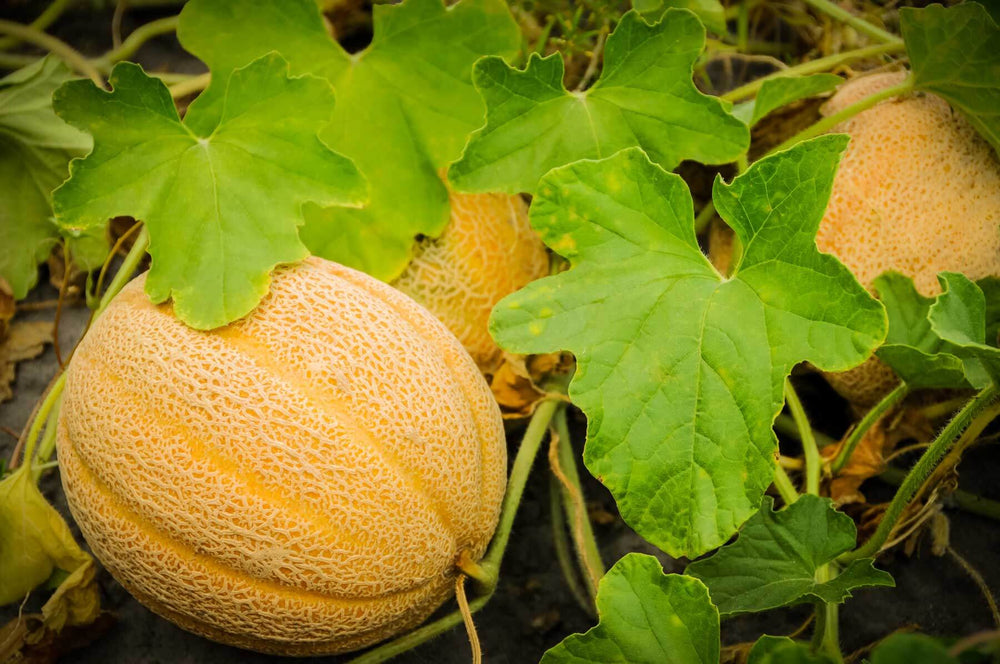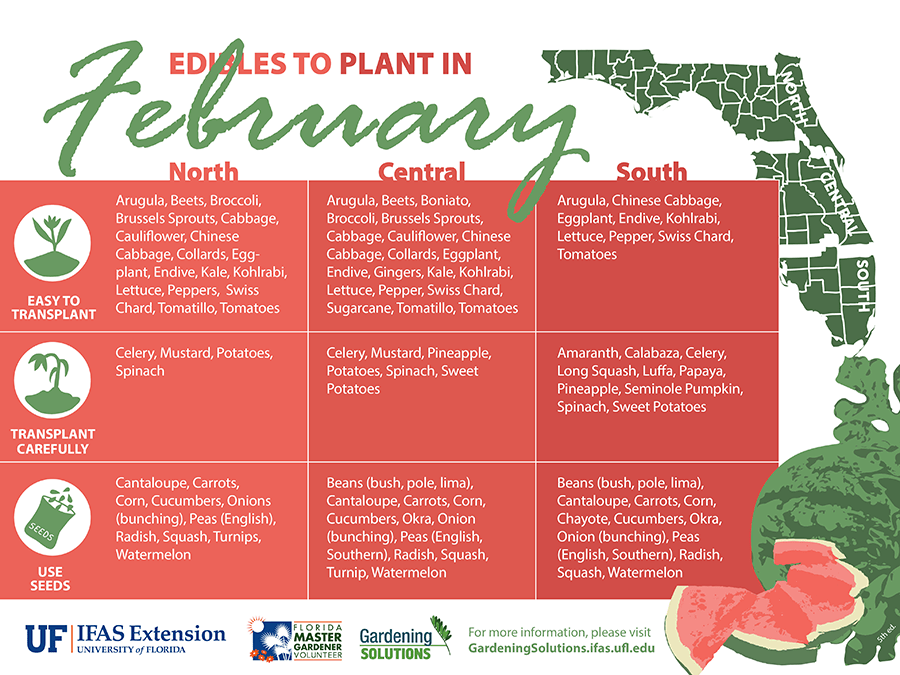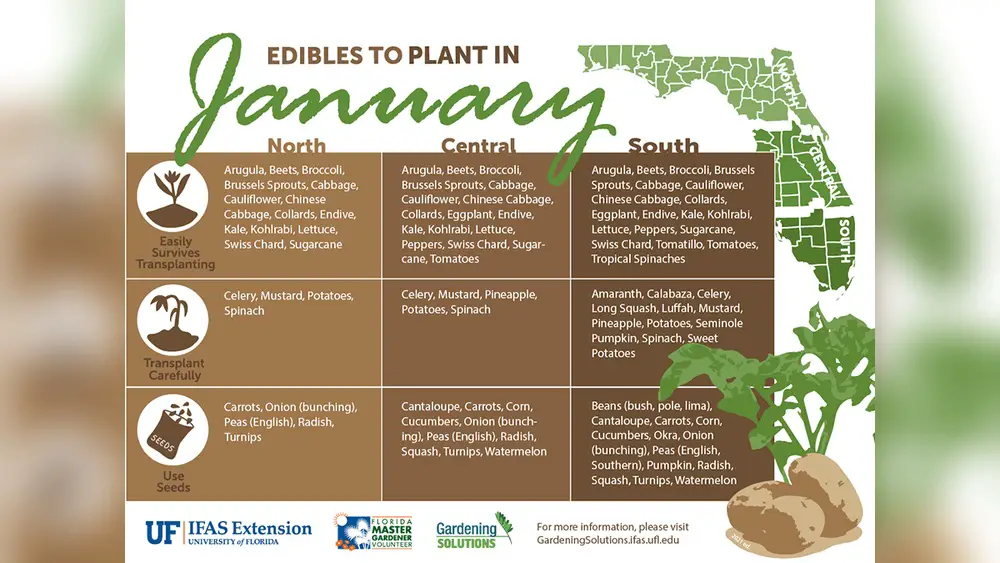Are you eager to grow sweet, juicy cantaloupes right in your Florida garden? Knowing exactly when to plant your cantaloupe seeds can make all the difference between a bountiful harvest and disappointing results.
Florida’s unique climate means timing is everything, and planting at the right moment helps your plants thrive, avoid pests, and produce the best fruit. In this guide, you’ll discover the ideal planting windows, soil tips, and care tricks tailored just for Florida gardeners.
Keep reading to unlock the secrets to growing delicious cantaloupes that will have your neighbors asking for your gardening tips!
Climate Needs
Cantaloupes need specific climate conditions to grow well in Florida. Understanding these needs helps you pick the best planting time. Florida’s warm weather suits cantaloupes, but some factors matter most.
Knowing about temperature, frost risks, and seasonal changes ensures a healthy crop. This section explains important climate needs for cantaloupe in Florida.
Ideal Temperature Range
Cantaloupes grow best between 70°F and 85°F. Daytime warmth helps flowers bloom and fruits ripen. Night temperatures should stay above 60°F to avoid stress on plants. Soil temperature also matters. Seeds need soil at least 60°F for good germination. Cooler soil slows growth and may cause seed rot.
Frost Sensitivity
Cantaloupes cannot survive frost. Even light frost can kill young plants. Plant cantaloupe after the last frost date in your area. In Florida, frost risk varies by region. South Florida has little frost risk, so planting can start earlier. North Florida faces frost in winter, so wait until danger passes.
Seasonal Weather Patterns In Florida
Florida has hot, humid summers and mild winters. Early spring and late summer offer ideal planting windows. Avoid planting during the hottest months to reduce heat stress. Rainfall also affects growth. Too much rain can cause disease. Plan planting to avoid Florida’s wettest periods. This helps keep plants healthy and fruit sweet.

Credit: www.revivalgardening.com
Soil Preparation
Preparing the soil properly is essential for growing healthy cantaloupe plants in Florida. Good soil preparation helps roots grow strong and supports fruit development. It creates a good environment for moisture and nutrients, which cantaloupe needs to thrive.
Choosing The Right Location
Select a spot that receives full sun, at least 6 to 8 hours daily. The area should be free from strong winds and have enough space for vines to spread. Avoid low spots where water can collect, as this can cause root rot.
Soil Amendment With Organic Matter
Mix several inches of compost or well-rotted manure into the soil. Organic matter improves soil texture, making it easier for roots to grow. It also adds nutrients and helps the soil retain moisture during dry periods.
Soil Drainage And Ph Levels
Ensure the soil drains well to prevent waterlogging. Raised beds can help improve drainage in heavy soils. Test the soil pH and aim for a level between 6.0 and 6.5 for best cantaloupe growth. Adjust pH by adding lime to raise it or sulfur to lower it.
Planting Schedule
Cantaloupe thrives when planted in Florida’s warm soil from late March to early June. Choose well-drained, sunny spots for best growth. Starting seeds indoors can help extend the season before transplanting outdoors.
Planning your cantaloupe planting schedule is key for success in Florida. The state’s warm climate offers a long growing season. Proper timing helps plants avoid frost and extreme heat. This results in healthier vines and sweeter fruit.
Understanding the best months to plant, starting seeds, and timing for succession planting ensures a steady harvest. Careful scheduling maximizes yield and keeps your garden productive.
Best Months To Plant
Plant cantaloupe seeds outdoors from late February to early April. This period avoids the coldest weather and uses the warming soil. In North Florida, planting can start earlier than in South Florida. Avoid planting in summer’s hottest months to prevent poor fruit development.
Seed Starting And Transplanting
Start cantaloupe seeds indoors about 3 to 4 weeks before outdoor planting. Use seed trays or small pots with quality seed-starting mix. Keep seeds warm and moist for quick germination. Harden off seedlings by gradually exposing them to outdoor conditions. Transplant seedlings when they have at least two true leaves and the soil temperature reaches 70°F.
Timing For Succession Planting
Succession planting extends your cantaloupe harvest. Plant new seeds or seedlings every 2 to 3 weeks during the planting window. This method ensures fresh fruit over a longer period. Stop succession planting by mid-May to avoid the summer heat. Succession planting also helps reduce pest and disease pressure.

Credit: bonnieplants.com
Growing Techniques
Growing cantaloupe successfully in Florida requires choosing the right techniques. Proper methods help plants thrive in warm weather and sandy soils. These techniques affect fruit quality and yield. Understanding the options can improve your garden’s performance.
Ground Vs. Vertical Growing
Planting cantaloupe on the ground lets vines spread naturally. This method is simple and works well with plenty of space. Mulch helps keep the soil moist and reduces weeds. However, ground growing can increase the risk of disease from soil contact.
Vertical growing saves space by training vines up a trellis or fence. This improves air flow around the plants. Better air circulation reduces diseases and keeps fruits cleaner. Support heavy melons with cloth slings to prevent damage. Vertical growing is ideal for small gardens or limited space.
Using Raised Beds
Raised beds improve drainage, which is important in Florida’s sometimes wet climate. They warm up faster in spring, helping cantaloupe grow earlier. Raised beds also allow better control of soil quality. Adding compost and organic matter in raised beds creates a fertile environment. This method reduces soil compaction and encourages strong root growth.
Mulching Benefits
Mulching conserves soil moisture and keeps roots cool. It also prevents weeds from competing with cantaloupe plants. Organic mulches, like straw or wood chips, add nutrients as they break down. Mulch helps maintain a steady soil temperature, which is important in Florida’s heat. Keeping fruits off the soil reduces rot and pest problems. Mulching is a simple step that boosts plant health and fruit quality.
Watering And Fertilizing
Proper watering and fertilizing are essential for growing healthy cantaloupe plants in Florida. These practices help plants develop strong roots and produce sweet, juicy fruits. Understanding how much water and the right type of fertilizer to use will improve your garden’s success.
Optimal Watering Practices
Cantaloupe plants need consistent moisture, especially during fruit development. Water deeply at the base to reach the roots. Use drip irrigation or soaker hoses to keep leaves dry and reduce disease risk. Water early in the day to allow soil to dry before night.
Fertilizer Types And Timing
Choose a balanced fertilizer with equal parts nitrogen, phosphorus, and potassium. Apply fertilizer when plants start to vine and again when fruits begin to form. Avoid high nitrogen fertilizers during fruiting to prevent too much leaf growth and fewer fruits. Organic compost also improves soil health.
Avoiding Overwatering
Too much water can cause root rot and reduce fruit quality. Let the soil dry slightly between watering sessions. Check soil moisture with your finger to avoid soggy conditions. Proper drainage in the planting area helps prevent standing water around roots.

Credit: gardeningsolutions.ifas.ufl.edu
Pest And Disease Management
Managing pests and diseases is essential for growing healthy cantaloupe in Florida. The warm climate encourages many pests and diseases that can damage plants. Early detection and proper care keep your cantaloupe thriving. Knowing common pests and how to prevent disease helps you protect your crop effectively.
Common Pests In Florida
Florida cantaloupes face pests like aphids, cucumber beetles, and spider mites. Aphids suck plant sap and spread viruses. Cucumber beetles chew leaves and fruit, causing wounds. Spider mites feed on leaf undersides, leading to yellow spots and leaf drop. Whiteflies and squash bugs also pose threats. Regularly check plants for these pests to catch problems early.
Disease Prevention Tips
Prevent diseases by planting in well-drained soil with good airflow. Avoid watering leaves; water at the base of plants instead. Use mulch to reduce soil splashing onto leaves. Rotate crops each year to stop disease buildup in soil. Remove and destroy infected plants promptly. Clean gardening tools to avoid spreading pathogens between plants.
Natural And Chemical Controls
Natural controls include introducing beneficial insects like ladybugs and lacewings. Neem oil and insecticidal soaps help reduce pest populations safely. For severe infestations, use approved chemical insecticides, following label instructions carefully. Fungicides can control powdery mildew and downy mildew if applied early. Combine natural and chemical methods for best results in pest and disease management.
Harvest Indicators
Harvest indicators help determine the perfect time to pick cantaloupes in Florida. Recognizing these signs ensures the fruit tastes sweet and juicy. Proper harvesting protects the fruit and extends freshness. Handling after harvest keeps cantaloupes in good condition for eating or selling.
Signs Of Ripeness
Look for a creamy yellow color under the netted skin. The stem end should change from green to tan. A sweet, musky aroma near the stem signals ripeness. Gently press the blossom end; it should feel slightly soft. The fruit should easily separate from the vine with a light twist or tug.
Proper Harvesting Techniques
Use clean hands or scissors to cut the cantaloupe from the vine. Avoid pulling or twisting hard to prevent damage. Leave a short stem piece on the fruit for better storage. Handle cantaloupes gently to avoid bruising. Harvest in the cool part of the day to reduce heat stress.
Post-harvest Handling
Place harvested cantaloupes in a shaded, cool area immediately. Avoid stacking fruits too high to prevent bruising. Wash the melons with clean water before storage or sale. Store cantaloupes at temperatures between 50-55°F for best freshness. Use or sell cantaloupes within a week for optimal taste.
Troubleshooting
Troubleshooting is key to growing healthy cantaloupe in Florida. Problems can appear at any stage. Knowing how to identify and fix these issues helps improve your harvest. This section covers common growth problems, nutrient deficiencies, and weather-related issues.
Common Growth Problems
Slow growth often means poor soil or watering issues. Check if the soil drains well and stays moist but not wet. Wilting leaves can signal root rot or pests. Look under leaves for insects like aphids or spider mites. Powdery spots may indicate fungal infections. Remove affected leaves and use organic fungicides.
Nutrient Deficiencies
Yellow leaves usually show nitrogen deficiency. Add a balanced fertilizer to boost growth. Purple or reddish leaves may lack phosphorus. Use bone meal or rock phosphate for correction. Curling or distorted leaves can mean potassium deficiency. Apply potassium-rich fertilizer to fix this. Regular soil tests help keep nutrients balanced.
Weather-related Issues
Florida’s heat can stress cantaloupe plants. Provide shade during peak sun hours if needed. Heavy rains may cause root diseases or wash away nutrients. Improve drainage with raised beds or mulch. Sudden cold snaps can damage plants. Plant cantaloupe after the last frost date for safety. Wind can break vines; use supports or windbreaks to protect plants.
Frequently Asked Questions
What Is The Trick To Growing Cantaloupe?
Choose a sunny spot with well-drained, fertile soil enriched with compost. Plant seeds after frost, water deeply at the base, and mulch to retain moisture. Train vines vertically to save space and improve air circulation. Support heavy fruits with slings and harvest when melons slip easily from the vine.
What Time Of Year Do You Plant Cantaloupe In Florida?
Plant cantaloupe in Florida from late February to early April for the best growth. Use warm soil above 70°F.
How Many Cantaloupes Will You Get From One Plant?
One cantaloupe plant typically produces 2 to 5 melons, depending on variety and growing conditions.
Can I Plant Cantaloupe Seeds In The Fall?
Planting cantaloupe seeds in fall is generally not recommended. They need warm soil and frost-free conditions to grow well.
Conclusion
Plant cantaloupe in Florida when soil warms to 70°F or higher. Early spring or late summer works best. Choose a sunny spot with well-drained soil for healthy growth. Adding compost improves soil nutrition and moisture retention. Water plants deeply but avoid wetting leaves to prevent disease.
Watch for pests and remove them quickly. Harvest melons when they smell sweet and easily separate from the vine. Following these steps helps you enjoy fresh, tasty cantaloupes from your garden. Start planting at the right time and care for your plants well.
Success in growing cantaloupe is within your reach!

